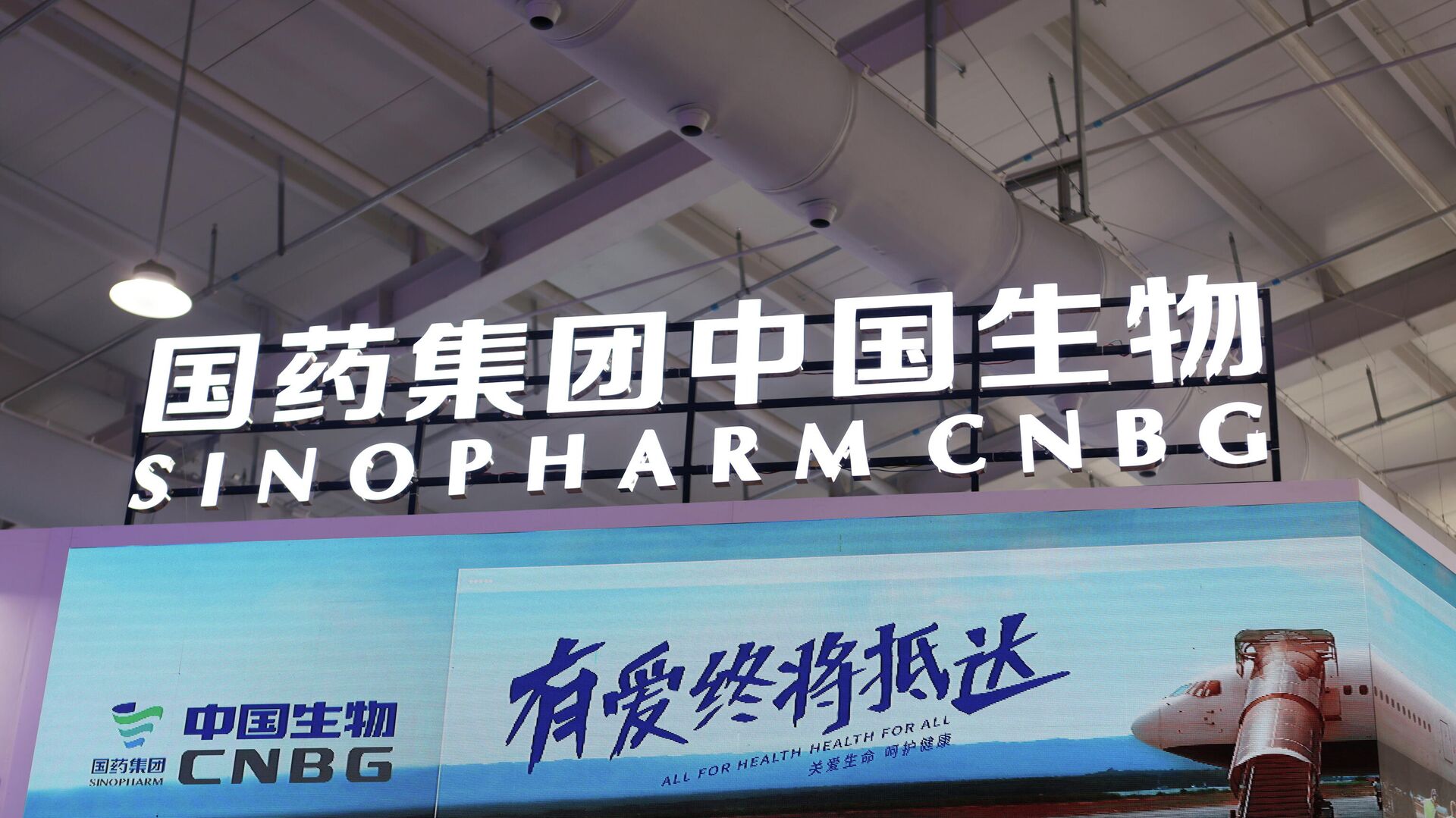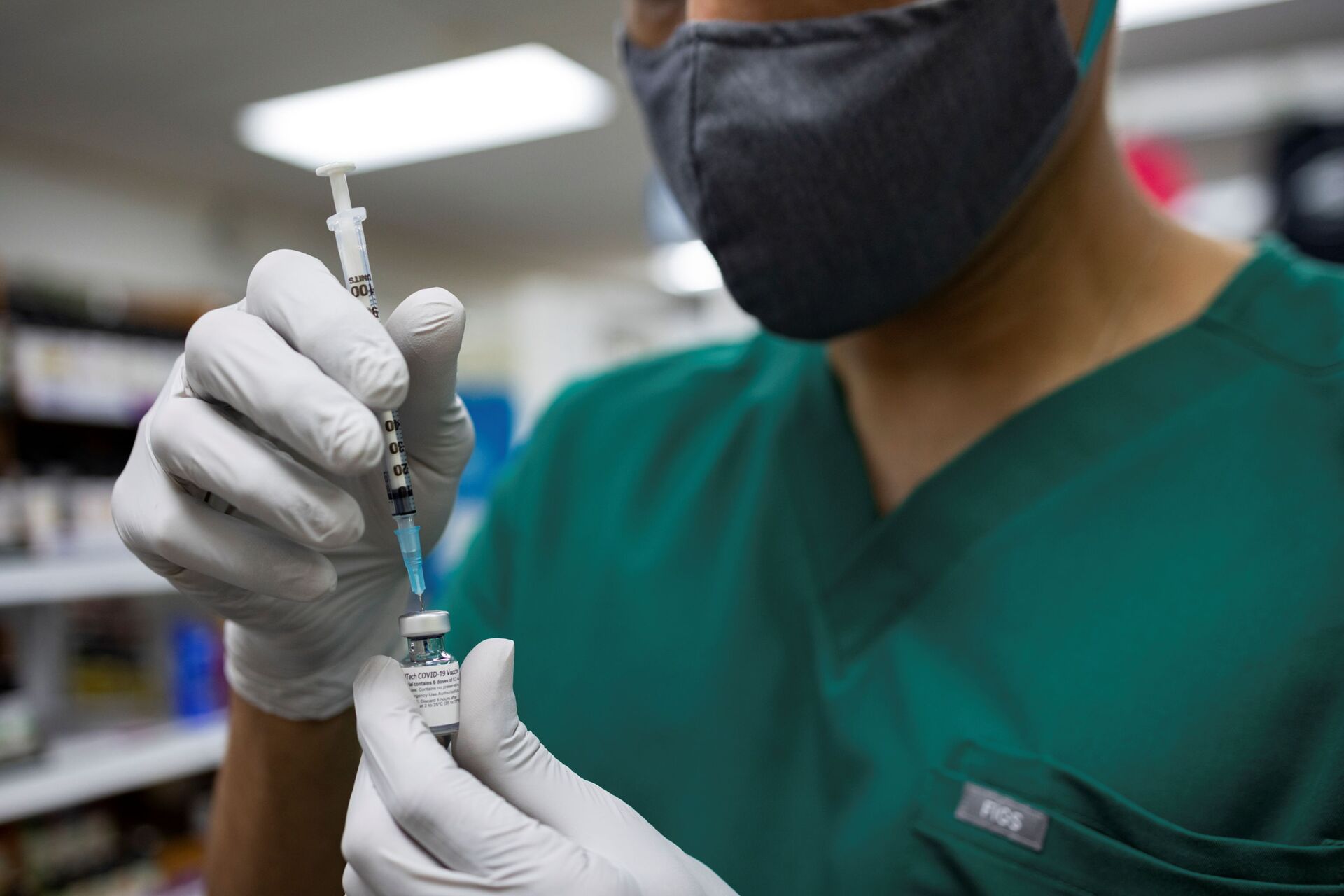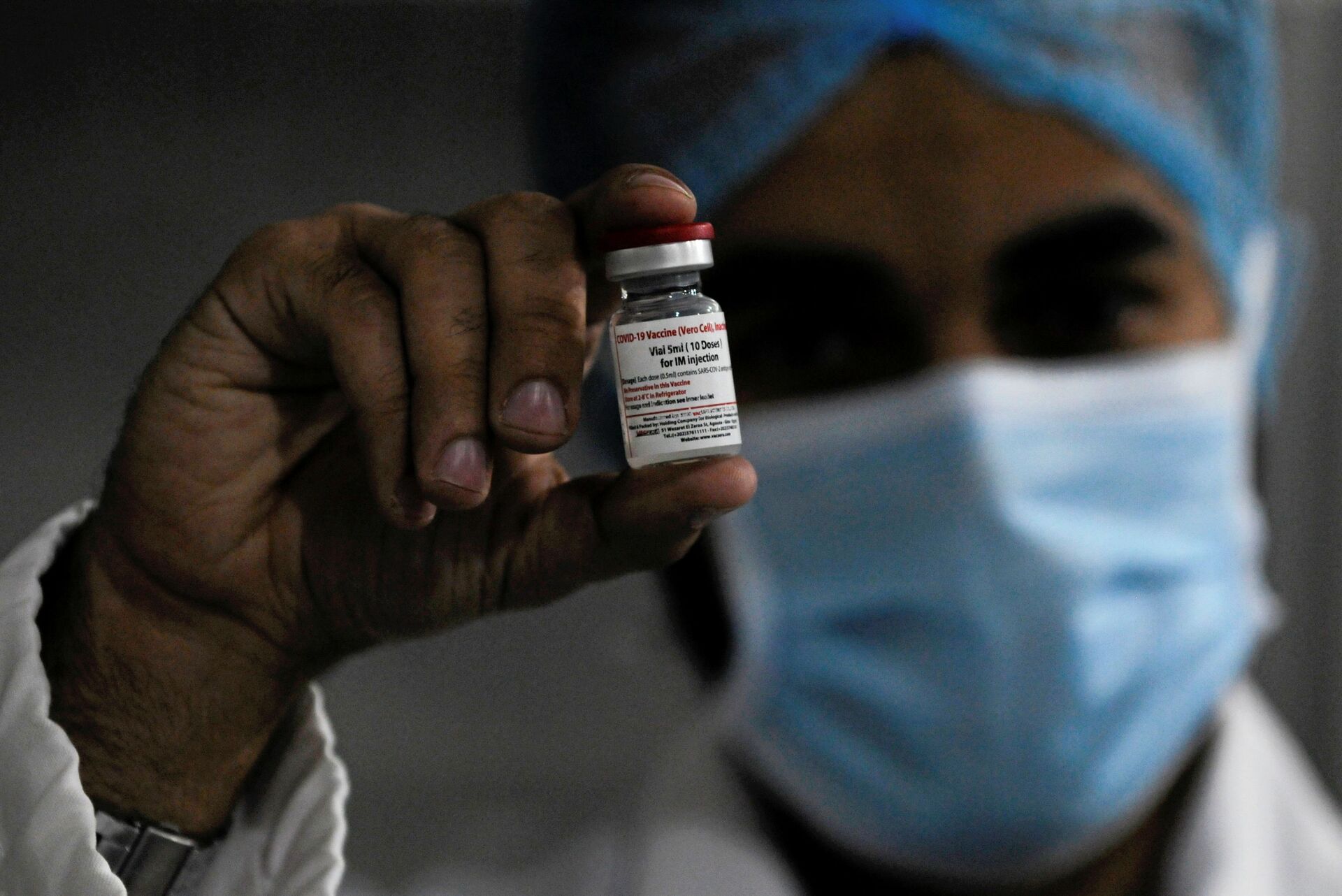Chinese Covid Vaccines Reach 100 Nations, But WHO Warns Africa Still Short 470 Million Shots in 2021

© REUTERS / Florence Lo
Subscribe
Unique among industrial nations, China has vaccinated more than 1 billion of its citizens against COVID-19 while exporting even more shots. While its vaccines are not as technically advanced as those made by Western pharmaceutical firms, they have been many nations’ only source of protection from the pandemic.
Chinese-made COVID-19 vaccines have been exported to more than 100 countries, President Xi Jinping recently announced, helping to fill much of the world’s need for protective shots. While Chinese vaccines are not the world’s most effective, their ease of manufacture and storage have made them valuable health resources as much of the world struggles to meet vaccination goals.
Speaking on Friday, Xi told leaders of the Shanghai Cooperation Organization that China had provided nearly 1.2 billion doses of finished and bulk vaccines to more than 100 countries and international organizations, making the socialist country the world’s largest vaccine provider.
"We will deepen anti-COVID cooperation with other developing countries, make good use of China's donation of 100 million U.S. dollars to COVAX, and make our due contribution to humanity's ultimate victory over the virus," Xi said, as quoted by Xinhua News Agency. He added on Tuesday while speaking at the United Nations General Assembly that China would provide another 1 billion doses to the world by the end of the year.
The COVAX program, which is jointly administered by the World Health Organization (WHO) and Gavi, the Coalition for Epidemic Preparedness Innovations (CEPI), provides vaccines to the world’s poorest nations at little-to-no cost.
However, the WHO said on Thursday it was short by 470 million doses in Africa due to unplanned supply shortages, threatening the continent’s end-year goal of vaccinating 40% of its population. At present, COVAX will deliver just 470 million doses, enough to vaccinate 17% of Africa.
Structural Barriers to Vaccine Equity
Dr Matshidiso Moeti, WHO Regional Director for Africa, blasted decisions by vaccine suppliers, which include India, China, and several Western nations, to keep export bans in place and to hoard vaccines.
Those nations “have a chokehold on vaccine supplies to Africa,” he said. “As long as rich countries lock COVAX out of the market, Africa will miss its vaccination goals. The huge gap in vaccine equity is not closing anywhere near fast enough. It is time for vaccine manufacturing countries to open the gates and help protect those facing the greatest risk.”
The UN-connected global health group has repeatedly condemned Western policies that block poorer nations’ access to their high-powered mRNA vaccines, which are more expensive but more effective than the more traditional whole inactivated virus (WIV) vaccines. Those policies include administering third “booster” shots to their own citizens instead of exporting the extra doses to the Third World and intellectual property laws codified in the World Trade Organization’s Trade-Related Aspects of Intellectual Property Rights (TRIPS), which prevent generic versions of drugs from being manufactured abroad for cheap.

Dr. Mayank Amin draws a dose of the Pfizer-BioNTech coronavirus disease (COVID-19) vaccine before giving a booster dose at Skippack Pharmacy in Schwenksville, Pennsylvania, U.S., August 14, 2021
© REUTERS / Hannah Beier
According to the WHO on Thursday, although one-third of humanity has been vaccinated against SARS-CoV-2 infection, just 2% of those shots have been administered in Africa. By comparison, half have been given in the world’s richer nations, including the US, UK, and European Union.
“The staggering inequity and severe lag in shipments of vaccines threatens to turn areas in Africa with low vaccination rates into breeding grounds for vaccine-resistant variants. This could end up sending the whole world back to square one,” Moeti said.
On Monday, Indian Health Minister Mansukh Mandaviya said exports and donations to COVAX would resume next month, having been paused in the spring due to a colossal COVID-19 outbreak in the country which might have killed 4 million people. The country had previously been a major provider of the Oxford/AstraZeneca vaccine, by far the world’s cheapest, but which carries a troublesome expiration date that has seen some nation’s shipments expire before being administered.
Enduring Popularity of Chinese Shots
According to a Tuesday report by the South China Morning Post (SCMP), Chinese vaccines have enjoyed such popularity due to a combination of factors including cost, availability, and ease of use.
The two primary vaccines China has exported, by SinoVac and Sinopharm, are both WIV vaccines, a proven technology that did not require the creation of new methods of manufacture or delivery, greatly reducing their cost. In addition, the shots can be stored at between 2 and 8 degrees Celsius, or normal refrigerator temperature, according to the BBC. Russia’s Sputnik V vaccine is also stored at refrigerator temperature.
However, the western messenger RNA vaccines, which are a new type of vaccination, must be stored at much colder temperatures: -20 Celsius for Moderna’s shot and -70 Celsius for the Pfizer-BioNTech shot. Those require specialized cold storage chambers, which are unlikely to be available in many poorer or more rural parts of the world, and frustrate even the transport process.
Western nations have not promised even the number of vaccines China has already delivered, much less what Beijing has committed to. The Biden administration said it would buy 500 million Pfizer shots to donate to poorer nations, with the majority not arriving until next year.
“Given the current supply shortfall, the billions of doses of WIV from Sinopharm, Sinovac and Bharat [Biotech of India], when approved by the WHO, will be very important in the first round of vaccination globally,” Jerome Kim, director general of the International Vaccine Institute, told SCMP.
“Over the midterm, the next six to nine critical months, where we have 11 billion doses to go, can we do it without inactivated vaccines? Now we need to vaccinate 8 billion – we may very well need every vaccine we can get that is WHO emergency use licensing [approved], particularly ones that can be kept stable at achievable temperatures for extended periods,” he added.

A worker holds a vial of China's Sinovac COVID-19 vaccine produced by VACSERA Co. in Cairo, Egypt July 8, 2021. Picture taken July 8, 2021.
Kim said the WIV vaccines will continue to be important because it was unknown “how quickly, cheaply, and in what volume the protein vaccines will be available and whether additional changes in the storage parameters of RNA vaccines will occur.”
The downside to the Sinopharm and SinoVac vaccines is their lower effectiveness compared to mRNA vaccines. The WHO has found two Sinopharm shots to be 79% effective against symptomatic SARS-CoV-2 infection and two SinoVac shots to be just 51% effective. While studies of a third dose have shown a promising boost for SinoVac, some nations - including China - are testing mixing SinoVac with other vaccines.
China is set to begin testing the effects of giving the unpopular but novel DNA vaccine developed by the US company Inovio as the second vaccination dose after SinoVac, or vice-versa, later this year. Meanwhile, Thailand is mixing SinoVac and AstraZeneca doses; South Korea has also tested mixing the AstraZeneca shot, but with Pfizer’s mRNA shot, with strong results.
Meanwhile, other Chinese vaccines are also in development. Chongqing Zhifei Biological Products has developed a vaccine that is also stored at room temperature, but requires three shots to reach an efficacy of 81%; and Sinopharm is also developing its own mRNA vaccine.


